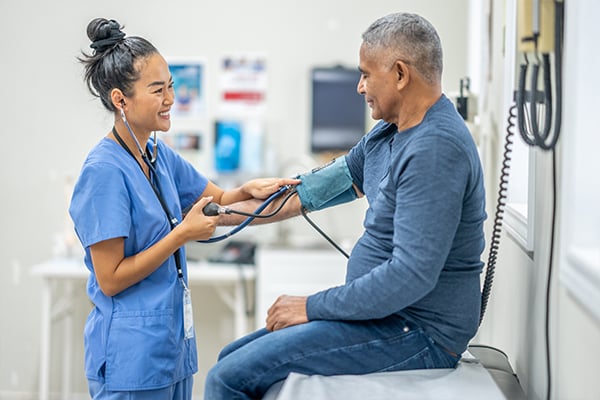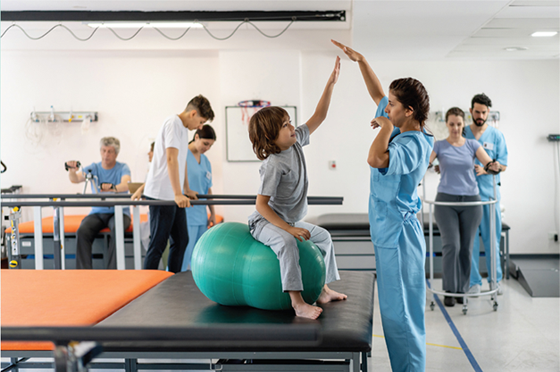For students embarking on their clinical and internship experiences, it’s important to prepare and guide students through clinical experiences by integrating their foundational knowledge with practical application, to ensure students master the employability skills needed to succeed in the workplace.
- Guide workplace behavior with opportunities to apply and build mastery of key employability skills. Students have been building knowledge as they have progressed through their health science pathway. As students prepare for their clinicals, it’s important to also develop their soft skills, professionalism, interview readiness, workplace behaviors, and awareness of ethical practices.
- Prepare students for offsite or simulated clinical experiences.
 Activate in-class learning by building knowledge of healthcare procedures, including sterile technique, safely lifting and positioning patients, ambulating with a gait belt, controlling bleeding, splinting, responding to burns, and more. Guide students through procedures with comprehensive procedure checklists, help students review and practice key knowledge and skills, and confirm mastery prior to their clinical experience.
Activate in-class learning by building knowledge of healthcare procedures, including sterile technique, safely lifting and positioning patients, ambulating with a gait belt, controlling bleeding, splinting, responding to burns, and more. Guide students through procedures with comprehensive procedure checklists, help students review and practice key knowledge and skills, and confirm mastery prior to their clinical experience. - Equip students with the resources they need to have successful clinical experiences.
 Look for resources that include lessons covering the basics or an overview of a variety of healthcare professions. Guide students through their clinical rotations with preclinical worksheets, workplace discovery sheets, and post-clinical rotation task sheets.
Look for resources that include lessons covering the basics or an overview of a variety of healthcare professions. Guide students through their clinical rotations with preclinical worksheets, workplace discovery sheets, and post-clinical rotation task sheets. - Have students do Post-Clinical Reflections.
Include a rotation report that lists key tasks students are expected to perform with a checkoff from the clinical affiliate, as well as reflective questions for students to report back and describe what they did, observed, and learned while on site.
These intuitive activities and tools will help students review and practice key knowledge and skills to confirm mastery prior to their clinical experience and test for understanding of anatomical diagrams and terminology, related diagnostics and pathology, and related equipment and procedures. With the projected growth in healthcare occupations expected to climb 45% from 2022 to 2032, it is important students build the skills needed for clinicals and careers.
 Source: Clinical and Employability Skills for Healthcare Professions is a comprehensive and versatile resource for students embarking on their clinical and internship experiences. The three units of this digital-first program, accompanied by the print Clinical Portfolio, prepare and guide students and instructors through clinical experiences to ensure students master the employability skills needed to succeed in the workplace.
Source: Clinical and Employability Skills for Healthcare Professions is a comprehensive and versatile resource for students embarking on their clinical and internship experiences. The three units of this digital-first program, accompanied by the print Clinical Portfolio, prepare and guide students and instructors through clinical experiences to ensure students master the employability skills needed to succeed in the workplace.
Aligned to applicable NCHSE National Health Science Standards and written by expert authors with firsthand experience starting and facilitating clinical rotations programs, intuitive activities ensure students are ready for their clinical experiences. With a streamlined learning path and flexible options for in-class and on-site clinical experiences, Clinical and Employability Skills for Health Care Professions has everything you need to guide students and implement a successful clinical rotations program.
Learn more and request free previews today at www.g-w.com/clinical-employability-skills-in-health-care-professions-2026.





